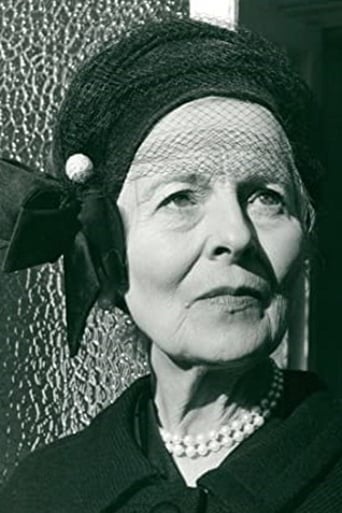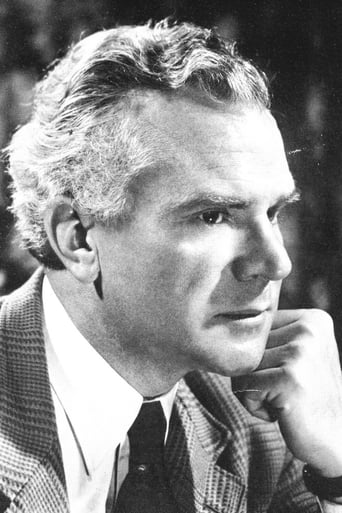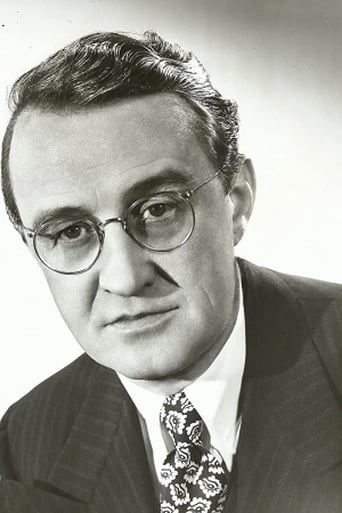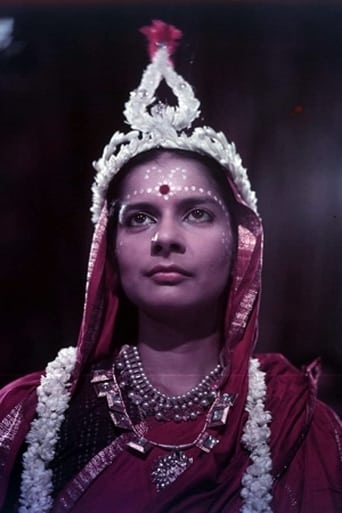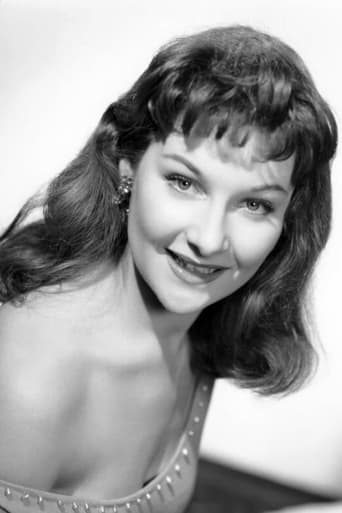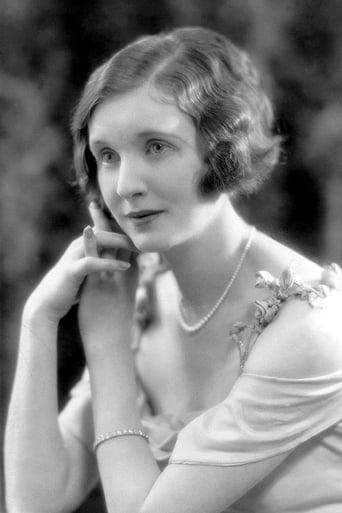ShangLuda
Admirable film.
ActuallyGlimmer
The best films of this genre always show a path and provide a takeaway for being a better person.
Janis
One of the most extraordinary films you will see this year. Take that as you want.
Fleur
Actress is magnificent and exudes a hypnotic screen presence in this affecting drama.
aaronlromano
We can all agree on two things at least: 1) Renoir is a genius and 2) This film has some stunning visuals with excellent uses of color etc. Those two things being said, I think - no I honestly believe - that this film has received so high a rating here on IMDb simply because it is by Renoir, and people fear that if they express distaste in Renoir, they make themselves appear foolish and uncultured. Thus, this film has an unjustly high rating. I only rated it as high as I did because of the stunning visuals, but the fact of the matter is even a master like Renoir can produce a dud. He's not the only one; Hitchcock directed Under Capricorn, Faulkner penned Mosquitoes, and Gary Oldman allows himself to be used in countless terrible movies - as Vonnegut says: "So it goes." The sad fact is that this film falls flat on glorious Technicolor face. The acting is wooden to the point of being nonexistent and the screenplay is horrible to the point of being cacophonous. I do not feel that it deserves the distinction of a Criterion release as a so-called "Important Classic Film" and I recommend, even as a personal fan of Renoir, that you pass on this one.
LobotomousMonk
The River is all about the construction of space and how people find their way through life. Filmed in India and in color, the spectator is immediately invited to the exotic. The title cards are imprinted into the diegetic world through scrolling long take, fusing the authorial voice with the fiction. There is a theme of auteurship in the story of The River that overtakes the superficial story of first love. The idea of first love is objective but the authorship is far from that. The portrayal of India is ethnographic but also biographical. The great depth of field serves a sense of pseudo-documentary. Identification is confounded somewhat through a lack of closeups. When there is a closeup, it is a two-shot. The adaptation beguiles an otherwise obvious example of the development of Renoir's famous stylistic system. Candid honesty is at the fore rendering the realism of group dynamics similar to Regle or M. Lange. However, the adaptation renders the literary directly to painterly while the authorship in voice-over narration retains a pure psychological focus on Harriet. Captain John is the object, that which provokes jealousy never has its own position elucidated. The voice-over narration gets intriguing as Harriet's character knows of events she was not present for. Harriet's diegetic character then narrates a story whose events are shown on-screen rendering multiple diegeses. When we believe we have returned to the first layer of diegetic, unpredictable events beg the question of whether we have slipped into a deeper secret layer and what connection they might all have to each other. The power of the authorship of Renoir and Godden combined subvert a political or even ethnographic study of the story. We are forced to submit to the coming-of-age-love-story alone. These self-reflexive characteristics have a strong connection to Renoir's Woman on the Beach. Again, many characters are underdeveloped highlighting the power of the authorial voice as a non-Transcendental 'Other'. According to Renoir, the universal element of the film was dance, however, I found its tableau framing to be inert in an unattractive way. Perhaps I am too much of a control freak to submit fully to a powerful authorial voice and as such The River is a film best left to those who love being taken along for a ride as opposed to those who must play at being a backseat driver. Of course, this statement has a deep irony in Renoir's own philosophy of the cork in the river.
KartofflMuter
Having read many of Rumer Godden's books,I hope to G-d she looks nothing like Harriet. There is Nothing,and I mean NOTHING in all the scenery of India that could take my mind off the face of that girl. I kept thinking, braces? nose reduction? paper bag?) No- since she was indeed the center of the movie,and that in itself was the main mistake, they casting should have been ,shall we say, less unfortunate. And to the reviewer who thinks a movie set in Bengal needed less local color,I say, "&*(*&&%!.) Who cares that three girls had a crush on a fairly uninspiring,homely,one-legged man? I didn't. I watched for "the local color." I have lived in Bengal and dipped my toes in the Ganges stared down a Brahmin cow,stroked a donkey painted pink for some unknown reason had a banana thrown at me by a Hanuman monkey and stood beside a dancing bear. Yes India is colorful and dangerous and not the least bit romantic. That nonsense should have died in all of your heads a long time ago when you discovered the reality of famine, corruption, bribes, and inequality that is India.I liked the music but found it strange that Melanie had such a thick non-Bengali accent and when her father tried to praise her painting (which isn't in her blood-so where did she learn it?) he said "bahaut achi" which is Hindi for or very nice.They are in Bengal. He would have said "Khub Bhallo" - which means very good in Bengali.To me this is one of those ,The Emperor Is Naked Folks movies.
dougdoepke
How wonderful are the rhythms, color, and imagery as they flow lyrically along - man, beast, spreading tree. They succeed one another like the film's central metaphor, the living continuum, the river of life. The lyricism, however, tends to flatten out the story's sparse drama in a way that requires some patience. In fact, these rhythms are the point -- life, death, renewal -- all beautifully photographed in great splashes of Technicolor. To contemporary audiences, a film like this must seem an import from an alien world, and I suspect it was not commercial even on release -- who else in the US but an art house would show it! The story is slender and idealized, set indelibly in India, and likely the author's fond reminiscence of childhood under the British protectorate. Except for the boy's muted passing, not much really happens.The only conflict involves three girls competing for a youngish war veteran, and it's a measure of Renoir's approach that the competition never interferes with their friendship. Everyone, it seems, behaves with admirable restraint, even the dutiful servants, all of which serves to somewhat prettify the British presence. Nevertheless, this is one of those movies that creeps up on you. It's only afterward, when the images have had a chance to linger and luminesce, that their sum total registers and you know you've seen something lasting. I, for one, am glad Renoir defied the rule and did not use pretty people; that would only have emphasized plot over theme, and individual over universal. Moreover, I wish more ordinary looking people appeared in movies, especially from Hollywood. Finding the unusual in the usual is the kind of thing I believe this movie was trying to bring out, while learning that lesson would do much to heal our celebrity- driven culture. This is a Renoir classic and demonstrates once again, amidst a slam-bang world, what can be done on the plane of artistic understatement



